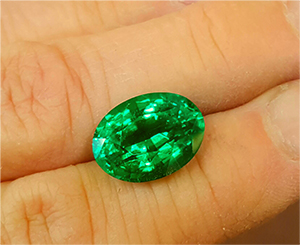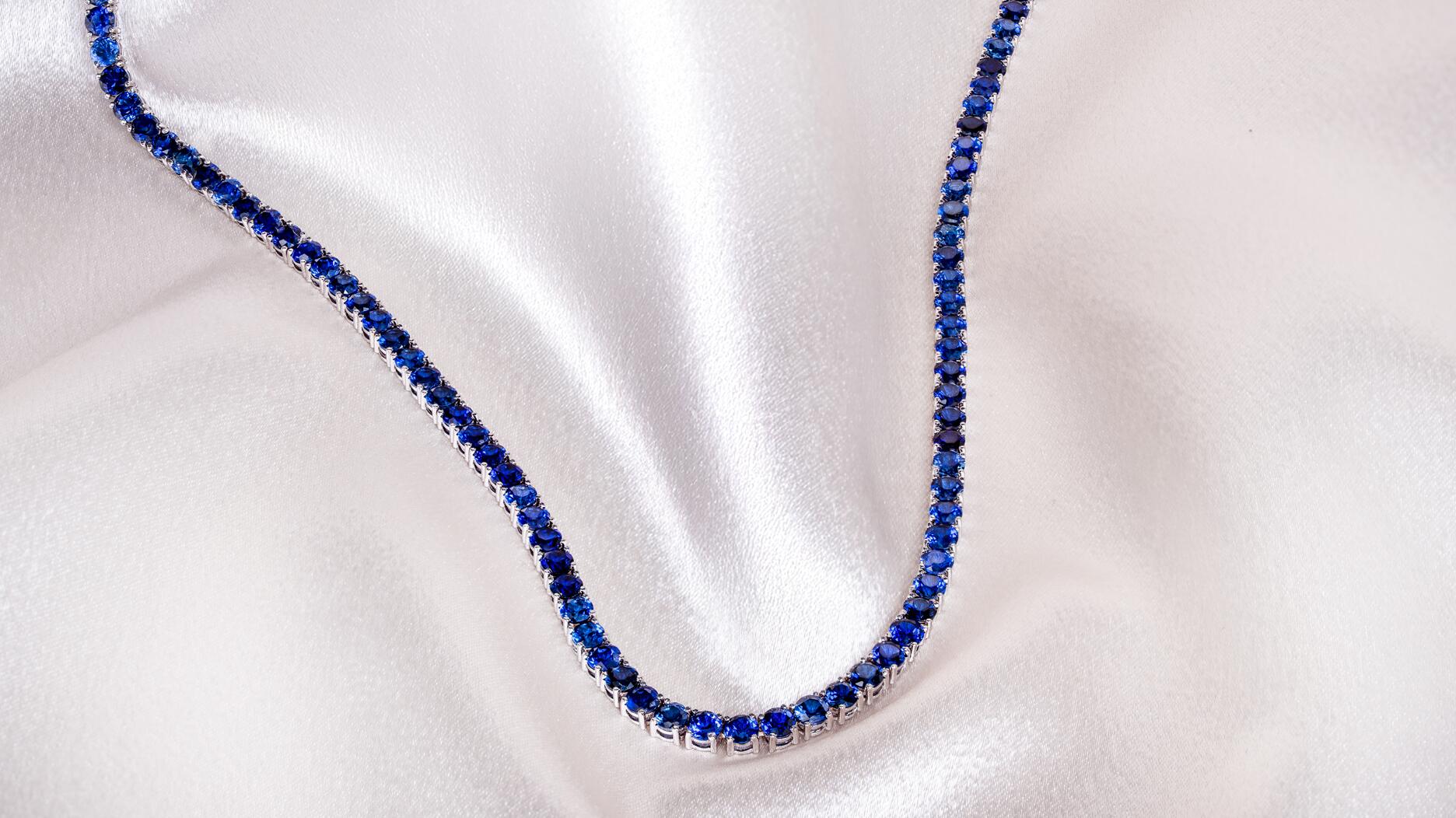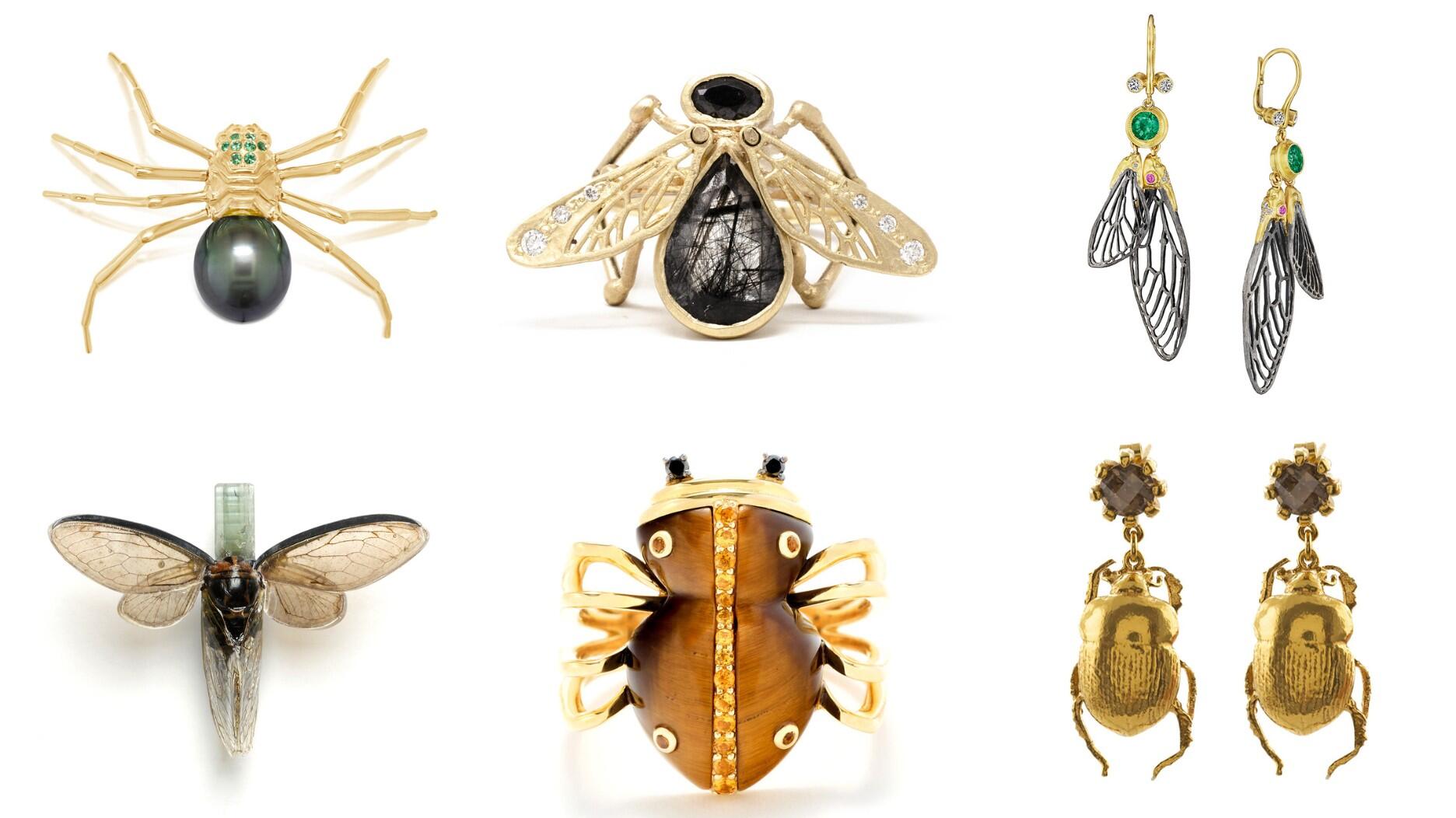Set in a Tiffany & Co. necklace, it sold for $4.2 million, the highest price and price per carat paid for a Paraíba tourmaline at auction.
5 Things to Know About … Ethiopian Emeralds
Senior Editor Brecken Branstrator shares five facts about the emeralds now originating from a source about 300 miles south of Addis Ababa.

It’s always kind of exciting when a new source for gemstones pops up and everyone starts wondering how big and important it will be for the colored stone market.
In Tucson, word started floating around about a new deposit of emeralds in Ethiopia. Since I wasn’t able to get much information there or see a stone in person, I decided to take some time to gather more information and give it a dedicated blog once I was back.
Ethiopia is, of course, already known for being a source of high quality opals, and while this isn’t the first time that the country has produced emeralds--even if it was in very small amounts--around last August, a new deposit started turning out some fine quality gems.
This new source is located about a little more than 300 miles south of the country’s capital, Addis Ababa.
It’s still pretty early days with this deposit, and there’s no telling how long or short the supply will run.
For now, though, here’s a little about what we know.
(One side note: I did reach out to Dr. Girma Woldetinsae, the director of research and development at the Ministry of Mines, Petroleum & Natural Gas in Ethiopia to get their take on the development, but he was not able to contribute to this blog post by press time.)
1. The new deposit is located in the Seba Boru district of the country.
The closest town to the mining area is called Shakiso, where the rough generally goes to market first after being sorted, according to a recent Gems & Gemology article. It then normally goes to be sold to dealers in the capital city of Addis Ababa, which is about a 12-hour drive north of the mining activity.
2. Mining done in the area still is done the traditional way, by hand and without heavy machinery.
According to Michael Nemeth of MLN Gems, who has traveled to the area, mining is being done by small-scale miners, and the area is divided into “associations,” with each featuring a manager and several members who control the mining and distribution of the rough.
While I wasn’t able to get a more recent number on production, a source in Ethiopia’s Ministry of Mines, Petroleum and Natural Gas told Nemeth that as of the end of January, more than 100 kilograms of emerald rough (about 500,000 carats) had been produced.
Gemstone
He estimates that most of the fine gem quality material currently coming out of the deposit is averaging 3 carats and under after cutting.
3. Though much of what comes from the source is commercial grade and heavily included, there is some fine material to be found.
The gem-quality crystals can be found in exceptional size, color and clarity and can produce stones that require no clarity enhancements like oiling, Kaufman, Nemeth and gem dealer Phil Zahm all said.
It’s schist-hosted material, which means the Ethiopian rough is comparable to emerald rough from Zambia and Brazil. (Colombian emerald rough is found in calcite deposits.)
Zahm described the color of the fine material from Ethiopia as a little more “open and vivid” than what he usually sees with emeralds, adding that it has a slightly more minty color and “kind of glows.”
Michael Krzemnicki, director of Swiss Gemmological Institute SSEF, said they have only gotten a few in to the lab so far, noting they were “rather medium saturated green and showed features and analytical properties ... somehow similar to emeralds from mica schist-related deposits such as in Brazil, Russia, Zambia and Habachtal in Austria (a historically important source in Europa) to name a few.”
4. Pricing of the material is still being worked out.
Pricing is hard to gauge and talk about since there has been so little coming out and so few gem dealers who are working with the material, but so far, it seems to be just about on par with or at a premium to Zambian and Brazilian emeralds, according to the dealers with which I spoke.
Nemeth said currently, he could sell an Ethiopian emerald between 2 and 3 carats for between $4,000 and $5,000 per carat, and perhaps a little more for a slightly finer stone.
Zahm has only worked with one stone so far, noting that he sold it for about $9,000 per carat.
Still, Kaufman said he’s seen that the price of the rough has gone up since the deposit started producing last fall, even as quality has gone down.
“The last parcel I looked at about two weeks ago, I saw 3.5 kilos (about 17,500 carats) of rough, of which I bought maybe 150 grams (about 750 carats). Nothing cut larger than 6 carats. And the color was not strong.”
Demand for the stones is there, especially since the deposit has shown it can produce emeralds that need no treatment or enhancement, but Kaufman said he’s seeing margins being squeezed as the price of rough increases due to rarity and the slow production of rough being snatched up quickly, which means buyers have to be more selective now.
“There’s a big learning curve on this material because there is no oil. If the material was oiled, you could cut much bigger stones because you could hide a lot of the inclusions," he said, adding that he and some other dealers would want to keep it untreated or unenhanced, to give it an advantage in the market.
Otherwise, the material competes with the emeralds from Zambia and Brazil, he said.
5. The local government is keeping a close eye on the new deposit.
Due to concerns about instability, most of the area was temporarily closed as part of a joint effort between the mining associations and the government in November and December, Gems & Gemology said.
According to Nemeth, it was closed again earlier this year after some issues with international buyers.
While it has since reopened, entering the mining area is prohibited, and all buying activity is closely restricted, with all buyers, even locals, required to obtain both a federal letter and a regional letter to participate.
Still, Nemeth said he thinks the area could be a big producer.
It remains to be seen whether that will be true or not, and it’ll be interesting to see how it things develop.
In the meantime, unless something changes in the area or someone else is brought in to ramp up production, it’s likely to stay, for a while at least, an area of concern for just a small amount of people in the trade and the material mostly for collectors and connoisseurs of gems.
The Latest

The jeweler’s “Deep Freeze” display showcases its iconic jewelry designs frozen in a vintage icebox.

Take luxury gifting to new heights this holiday season with the jeweler’s showstopping 12-carat sphene ring.

How Jewelers of America’s 20 Under 40 are leading to ensure a brighter future for the jewelry industry.

This year's theme is “Unveiling the Depths of the Ocean.”


In its annual report, Pinterest noted an increase in searches for brooches, heirloom jewelry, and ‘80s luxury.

Starting Jan. 1, customers can request the service for opal, peridot, and demantoid garnet.

Roseco’s 704-page catalog showcases new lab-grown diamonds, findings, tools & more—available in print or interactive digital editions.

The 111-year-old retailer celebrated the opening of its new location in Salem, New Hampshire, which is its third store in the state.

The new catalog features its most popular chains as well as new styles.

The filmmaker’s personal F.P. Journe “FFC” prototype was the star of Phillips’ recent record-setting watch auction in New York.

The new location in the Design District pays homage to Miami’s Art Deco heritage and its connection to the ocean.

Inflations, tariffs, and politics—including the government shutdown—were among consumers’ top concerns last month.

“Longtime favorite” presenters, as well as first-time speakers, will lead talks and workshops at the annual event in Tucson next year.

Silas Smith of Meridian Metalworks won the challenge with his pendant that blends Australian and American landscapes.

The sale of the 31.68-carat, sunset-hued stone was part of Sotheby’s first series of events and auctions in Abu Dhabi.

Most customers who walk into your store this month have made up their minds. Your job is to validate their choice, Emmanuel Raheb writes.

The collection features characters and motifs from Ukrainian folklore, including an enchanted mirror and a magic egg.

MatrixGold 3.11, the newest version of the jewelry design program, offers more flexibility, precision, and creative control.

The pavilion will be part of the 2026 JA New York Spring show, scheduled for March 15 to 17.

Kadet, a 1994 National Jeweler Retailer Hall of Fame inductee, helped grow the family-owned retailer in the Chicago area and beyond.

Billed as the world’s smallest wearable, Lumia Health’s new smart earrings have a health tracker subtly embedded in the back.

Don’t let those with December birthdays feel blue. Help them celebrate their month with blue zircon, turquoise, and tanzanite.

The new pink sapphire version of the piece dances with its wearer in the brand’s “Icons After Dark” holiday campaign.

A choice that’s generated a lot of commentary, Pantone says “Cloud Dancer” marks a fresh start and encourages relaxation and creativity.

The manufacturer’s holiday campaign features a gift guide filled with trending designs and jewelry that can be personalized.

The man was charged with theft, accused of ingesting the necklace while in a jewelry store in Auckland, New Zealand.




























